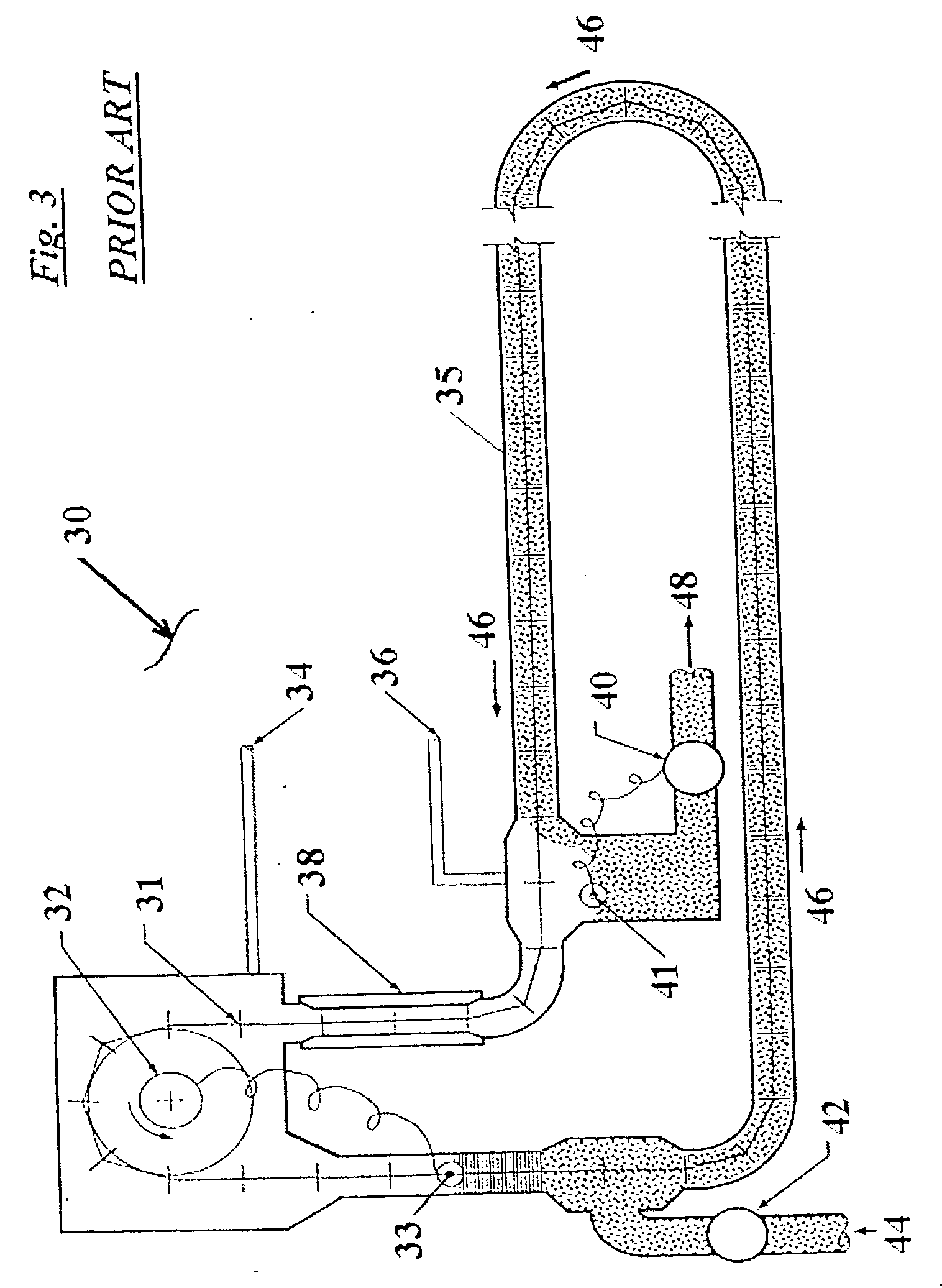Aseptic process for sterilization of solid products
a technology of solid products and aseptic processes, applied in the field of aseptic process for the sterilization of foods, can solve the problems of inefficient process of fig. 1, inferior quality product of aseptic processes, and limited final packaging units, etc., and achieve the effect of constant residence tim
- Summary
- Abstract
- Description
- Claims
- Application Information
AI Technical Summary
Benefits of technology
Problems solved by technology
Method used
Image
Examples
Embodiment Construction
[0049] The present invention is a system for and a method of aseptic processing of particulate foods.
[0050] The principles and operation of the method of the present invention may be better understood with reference to the drawings and the accompanying description.
[0051] Before explaining at least one embodiment of the invention in detail, it is to be understood that the invention is not limited in its application to the details of construction and the arrangement of the components set forth in the following description or illustrated in the drawing. The invention is capable of other embodiments or of being practiced or carried out in various ways. Also, it is to be understood that the phraseology and terminology employed herein is for the purpose of description and should not be regarded as limiting.
[0052] Referring to FIG. 4, system 100 of the present invention includes a sterilization chamber 103 having a longitudinal screw conveyor 105 rotating on axis 107, a cooling chamber ...
PUM
 Login to View More
Login to View More Abstract
Description
Claims
Application Information
 Login to View More
Login to View More - R&D
- Intellectual Property
- Life Sciences
- Materials
- Tech Scout
- Unparalleled Data Quality
- Higher Quality Content
- 60% Fewer Hallucinations
Browse by: Latest US Patents, China's latest patents, Technical Efficacy Thesaurus, Application Domain, Technology Topic, Popular Technical Reports.
© 2025 PatSnap. All rights reserved.Legal|Privacy policy|Modern Slavery Act Transparency Statement|Sitemap|About US| Contact US: help@patsnap.com



